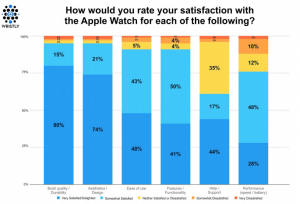
Expand your market share. Increase your margin. Reorganize your team.
Given the constant drumbeat of new and changing initiatives, it’s reasonable to wonder which priorities are truly the most important.
I hear about this from clients with great frequency: “We just can’t get to everything.” “We’re not making enough progress.” “We do a new strat plan every few years, but we don’t seem to have moved any further.”
Try Not to Lose Your Way
It’s hard to work on more than a half dozen things in a real way without getting completely swamped — by floodwaters if things move too quickly, or by quicksand if they don’t move at all. Or you might end up running all over the field, frittering away time and energy with little to show for them.
Plus, all the maintenance and operations for current initiatives, relationships, and output are ongoing. Think of it this way: You don’t get to give up brushing and flossing just because you’re starting a new exercise routine.
Tough Questions, Careful Review
When you’re overwhelmed by the number of directions or needs you’re facing, how can you carve your way through the thicket? And make sure your work is not going to waste? And give clear direction to others so you’re not making them suffer?
You can reorient yourself and your team by going back to basics. Ask big questions about what should be, and smaller questions about what actually is. These areas of inquiry will help you decide if you agree with the direction things are going, need assistance, or need to face a problem directly.
- Where are we trying to end up? Is the mission clear for the organization or your group? Have leaders specified both short and long term goals? Are the projected outcomes both brand-congruent and market-relevant? If conditions were perfect, could they all exist?
- What will it take to get these things done, and will accomplishing one goal affect our ability to focus on another? Which things absolutely must happen or other crucial outcomes can’t happen? Are there alternative approaches to accomplish the same results? Think of it sort of like minimum viable product — what’s the minimum viable combined success to strive toward? And are there things you don’t need to do — because nothing will be hurt or they can wait?
- Which factors can you control, and how much do you depend on other people or external resources for your progress? Do you have the people, infrastructure, money, and bandwidth? Do you have the critical path and time sequence? Have you identified and resolved bottlenecks? Is delegating or outsourcing a viable option?
- Who’s evaluating and managing contingencies? What’s the downside if you don’t hit targets, launch on time, manage the tricky integrations? What’s the upside if you do? Are there sequencing impacts?
- Does the organization have the appetite to do the hard work of meeting all these commitments? How is the planning process being led? Are all involved groups coordinating their thinking and documentation processes? Are people inspired enough to stay the course? This is important because flipping from one initiative to another makes people nuts.
Consider These Contextual Guidelines
As you’re assessing your planning targets and resource needs, be careful not to self-censor. Don’t worry yet about all the things you know you can’t have. Start by identifying everything you need to achieve your stated goals. Then, if there aren’t enough resources, if things are too tight, negotiate the best bargain you can. But first make sure everyone understands the optimal case, not just the pragmatic compromise.
If managing all these factors seems overwhelming, consider this simpler analogy: It’s like conducting a meeting that has an agenda, a facilitator, and a parking lot. The facilitator is always checking: Are the right people here to contribute their expertise, complete an analysis, and make thoughtful decisions? Should this topic be addressed now? Should it be taken offline by the parties who need to manage the detail? Or does it really belong in the parking lot to be taken up at a different time?
Here’s another helpful analogy: Performance evaluations aren’t very effective at actually improving performance when they only happen for two weeks every year rather than as an ongoing stream of feedback so that employees always know exactly where they stand. Similarly, strategic planning is usually less effective — and less strategic — when you ignore it for years and then overdose on it by making it your only focus for a few months.
The choice of your priorities and your specific planning deadlines will not be as artificial or as stressful if you treat planning as an ongoing, iterative process that’s part of your every day reality.
Business & Finance Articles on Business 2 Community(44)
Report Post





